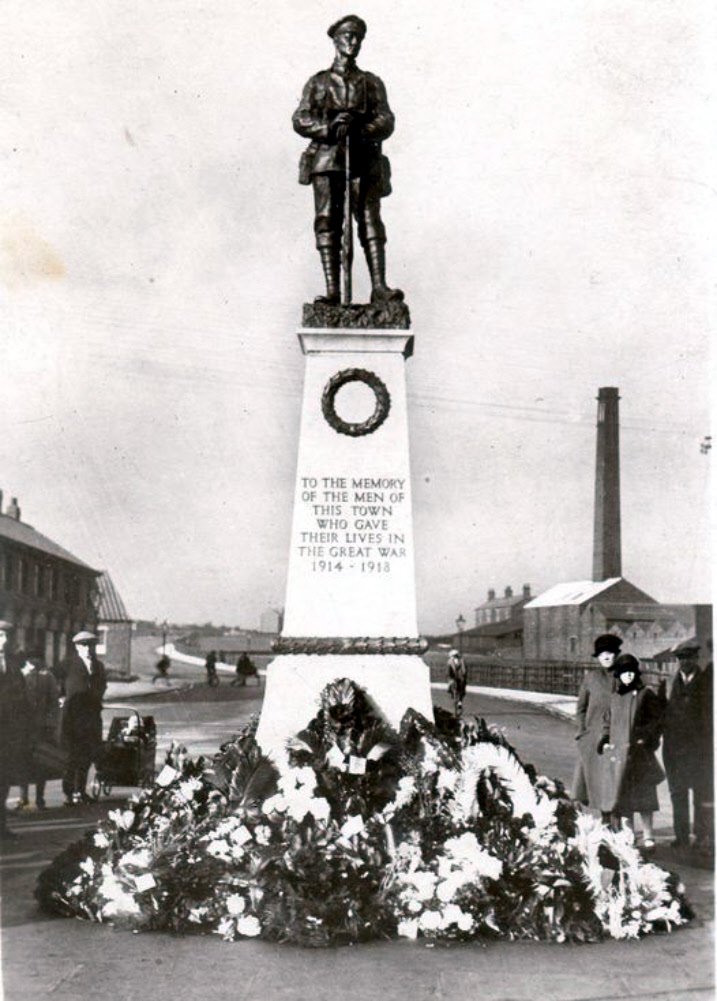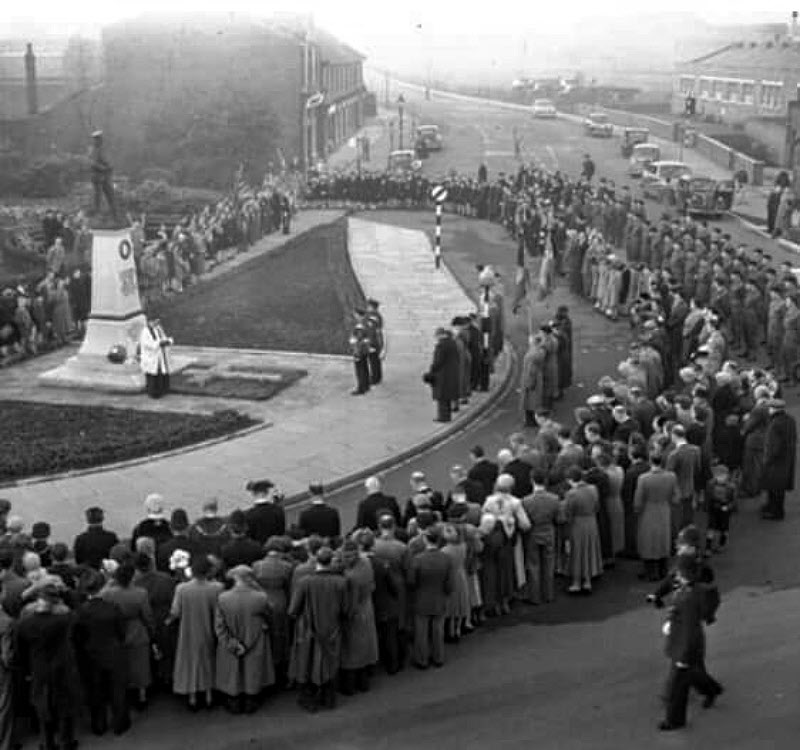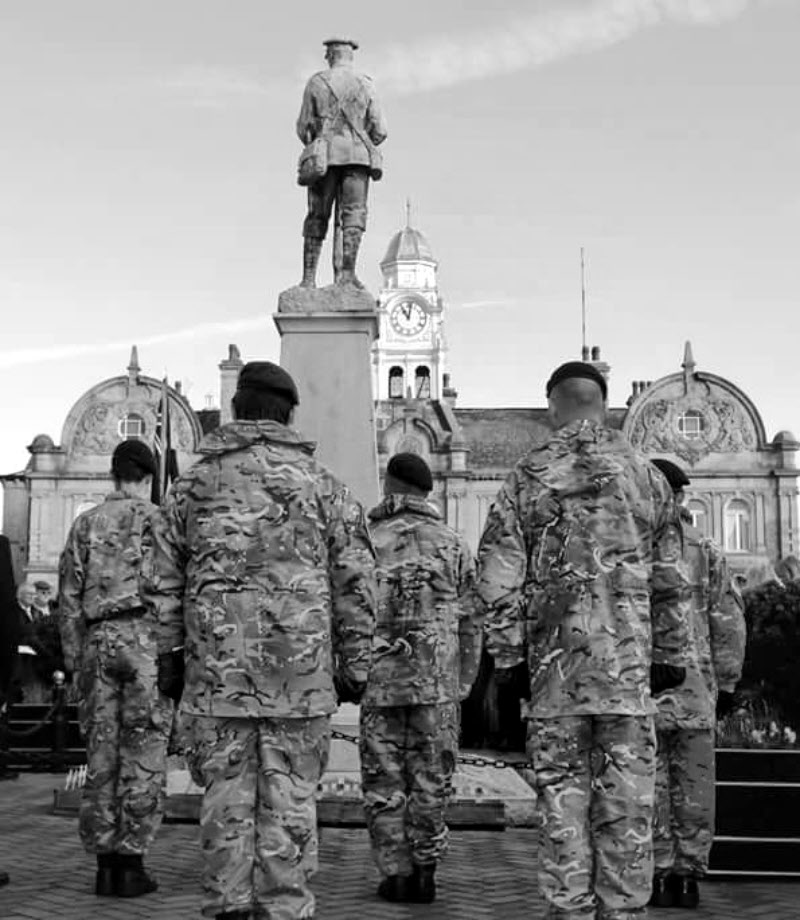
It was a cold and damp, misty morning in the Foret de Compiegne in Picardy, France. The date was November 11th, 1918. The time was 11am. From a railway carriage, transported there for the purpose, the announcement was made that The Great War, the war which was to end all wars, was over. The Armistice had been signed.
Meanwhile, on the same day, just 60 miles to the north near Bapaume, British soldiers, including Private Arthur Dews of Ossett, held their breath in the hope that this was more than just another false dawn. Their war had indeed ended and Arthur, aged 24 years, thought of home and his parents and four siblings. Only footsteps away from my own home, the news filtered through to the family at 10, Haggs Hill Road, Ossett that the Armistice had been signed. The only talk was of Arthur’s safe return.
November 11th 1918 was a day of celebration for the Allies. Arthur Dews was enjoying the peace with four soldier friends when one took off his jacket and hit it against a wall to remove the dust and dirt of conflict. A grenade had found its way into the lining and exploded killing two of the soldiers and wounding another three. Tragically, Arthur was seriously injured and died in France on December 14th 1918.
It was a cold and damp, misty morning in Ossett in mid December 1918. Arthur’s family finally learned that he wouldn’t be coming home. He hadn’t survived the injuries so cruelly inflicted on November 11th 1918. For this family the Armistice was a false dawn. Their beloved elder son would never return to them.

Above: Ossett War Memorial in its original position at the bottom of Kingsway in 1928 until 1954 when it was resited.
Exactly 10 years after the Armistice, at 11 am on Sunday 11th November 1928, the Ossett War Memorial was unveiled. It stood proudly on the newly constructed Kingsway. On the face of the memorial, in bronze letters, the dedication read:
“TO THE MEMORY OF THE MEN OF THIS TOWN WHO GAVE THEIR LIVES IN THE GREAT WAR 1914-1918”.
A Commemoration Programme for the occasion included 230 Ossett men who made the ultimate sacrifice. Although Ossett had had a ten year wait for this Memorial the town wasn’t short of others. Most churches and chapels had their own, as did Ossett Grammar School and the Conservative and Liberal clubs. In all, Ossett had another 15 memorials upon which were revealed a further 13 Ossett men not named in the 1928 Commemoration Programme.
Arthur Dews wasn’t remembered on any of these memorials. He wasn’t alone. Recent research of reports and obituaries in local newspapers and the Commonwealth War Graves Commission has identified another 71 Ossett men from WW1 who are not remembered on any past or present Ossett memorial. In total, 314 Ossett men lost their lives in the Great War 1914-1918.
In the late 1940s a second inscription was added to the Memorial. It recognises 86 Ossett men and women who died in WWII. Together with the 313 Ossett Fallen in 1914-1918, Ossett lost 399 of its men and women in these two conflicts.

Above: Remembrance Day 1954
In 1954 the Memorial was repositioned to accommodate changes to Kingsway and the Town Centre road network. It remained in this new position, still on Kingsway, until 2001 when it was moved to the Market Place.
The Ossett War Memorial was granted Grade II listed status on May 6th 1988. It is a fitting tribute to those who lost their lives in WWI and WWII. However, to some, it is anonymous because it does not record their names. It recognises the event but not the sacrifice and it says nothing of their number and tells little of their loss. In the absence of a record of those who died how is it possible to know the extent of the sacrifice and suffering of these men, women and children of Ossett who lost their lives, their husbands, their sons and daughters, their brothers and sisters, their fathers and mothers? How is it possible to remember these men and women for the next 100 years if we know not who they were? How can we feel their pain?

Above: Remembrance Day, Ossett, 11 a.m., November 11th 2017
Something must be done. 700 people voted for these names to be engraved at the War Memorial, ensuring that it remains the focal point for Remembrance in Ossett, as it has been since 1928. There is also overwhelming support from local ward councillors, Ossett interest groups, the British Legion and the residents of the town.
Wakefield M.D.C. has approved funding for a proposal devised and submitted by Alan Howe and Pat Howe.
Aided by Nev Ashby, Alan Howe has researched and written the biographies of each of the 400 Ossett men and women who lost their lives in WWI and WWII. These biographies, including that of Arthur Dews, can be viewed at www.ossettheritage.co.uk.
It is the aim of the proposal to see tributes and the names of these 400 men and women engraved on 20 granite stones laid around the base of the War Memorial. Provision will also be made for the placing of small crosses which has become an integral part of Ossett commemorations.
Importantly, this will encourage children to continue to play a part and enables others to remember their ancestors from Ossett and beyond. There is a huge appetite for Remembrance within the town. This was demonstrated by the gathering of over 600 people at the War Memorial for the November 2017 commemorations.
This is a chance for our children and our children’s children to understand more about the Ossett Fallen and to carry forward their memory for another 100 years. The objective is completion by 11am on Sunday, November 11th 2018. Exactly 100 years after the signing of the Armistice. This is one chance in 100 years.
Private Arthur Dews will be there. He is remembered. He has come home.